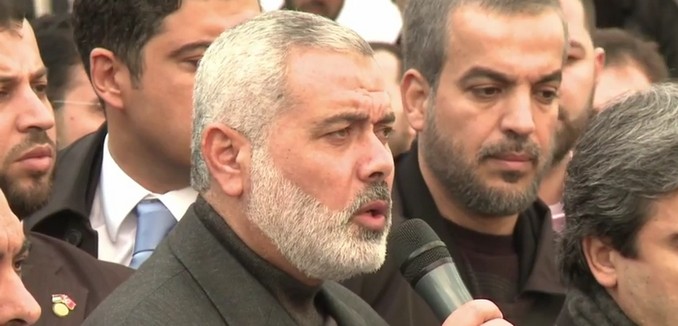Ynet reported on Tuesday about the wealth accumulated by the leaders of Hamas, in contrast to the poverty suffered by most residents of Gaza.
The Ynet article focuses first on Hamas leader Ismail Haniyeh.
Someone who has benefitted financially is the former Hamas prime minister in Gaza, Ismail Haniyeh. Before 2006 and Hamas’ shocking electoral win and subsequent dominance of the Palestinian government , 51-year-old Haniyeh was not considered a senior figure in Hamas in the Gaza Strip. But according to reports in the past few years, Haniyeh’s new-found senior status has allowed him to become a millionaire. This is an unusual feat, given that he was born to a refugee family in the al-Shati refugee camp in northern Gaza.
In 2010, Egyptian magazine Rose al-Yusuf reported that Haniyeh paid for $4 million for a 2,500msq parcel of land area in Rimal, a tony beachfront neighborhood of Gaza City. To avoid embarrassment, the land was registered in the name of the husband of Haniyeh’s daughter. Since then, there have been reports that Haniyeh has purchased several homes in the Gaza Strip, registered in the names of his children – no hardship, as he has 13 of them.
The report mentions that Haniyeh’s son was arrested on the Gaza-Egypt border with millions in cash on hand.
But Haniyeh is not alone. Following the fall of Egyptian President Hosni Mubarak and coinciding with the brief rise of the Muslim Brotherhood, “Gaza’s market for luxury villas costing at least a million dollars was booming, most purchased by people associated with the establishment of Hamas.”
Hamas’s leadership built its wealth largely through the smuggling tunnels. Hamas officials levied taxes, usually 20%, on goods that were smuggled through the tunnels.
The role of the tunnels in enriching Hamas and its supporters has been well documented. Der Spiegel profiled the “king of the tunnel builders,” Abu Ibrahim, in 2008. In 2012, Khaled Abu Toameh observed that there were an estimated 600 millionaires living in Gaza who “made their wealth thanks to the hundreds of underground tunnels along the border between the Gaza Strip and Egypt.” Al Monitor reported the next year that a “result of tunnel trade is the formation of a new class of wealthy individuals who were able to accumulate massive fortunes in a short period of time.”
A comprehensive overview of Gaza’s economy written by Ehud Ya’ari and Eyal Ofer of the Washington Institute identified Gaza’s economy, of which “trade conducted via the more than 800 tunnels into Egypt” played a large role, as a tool that helped Hamas to “[evolve] from a relatively small movement into a well-funded conglomerate.” This allowed “Hamas … to empower loyalists while leaving the main burden of responsibility for Gaza’s 1.6 million residents to others.”
The growing wealth of Hamas’s leadership has led to increased resentment of the terrorist organization that governs Gaza. The Christian Science Monitor reported in 2011 that Gazans “tell stories of Hamas officials who used to drive modest cars now sporting luxury vehicles, and … complain the government is reaching into their pockets in every way it can.” The Ynet report notes that in contrast to the leadership of Hamas, a World Bank report ranks “the Gaza Strip … third in the Arab region in terms of poverty, ranking above only Sudan and Yemen.”
The irony is that Hamas reportedly gained popularity, in part, due to its reputation for honesty as opposed to its rival Fatah, which is known for corruption.
In the December 2013 issue of The Tower Magazine, Jonathan Schanzer observed in We Really Need to Talk About Corruption that the West “shows little interest in genuinely helping the Palestinian people attain a government dedicated to coexistence with Israel, nor one built on the open, fair and transparent civil society and legal system required to build a successful state.” The Ynet report suggests that, aside from its support of terror, Hamas does not represent much of an improvement.
[Photo: AFP / YouTube ]




